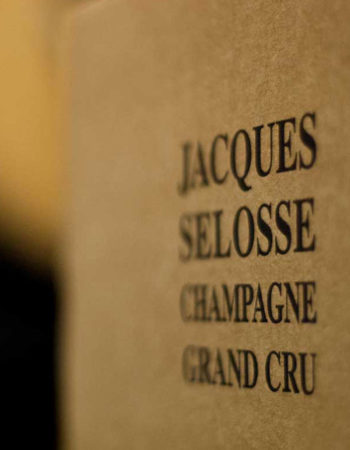On a recent WineSearcher.com list of the world’s 10 most expensive Champagnes, luxury house Krug ranked alongside vintage-only têtes de cuvées Cristal and Dom Pérignon. Sneaking in at No. 10, with an average price of $1,348, is a cult blanc de blancs virtually unknown outside of industry circles.
Jacques Selosse founded his eponymous estate in the 1950s and released his first vintage around a decade later. Critical acclaim arrived in the 1980s, when Jacques’ son, Anselme, revolutionized production after completing his oenology studies in Burgundy. Nowadays, Anselme is a revered figure in the sommelier community, and bottles of his Champagne are among the most sought-after wines in the world.
“He was one of the pioneers, if not the pioneer, in changing Champagne to a place where healthy farming comes first,” Courtney Wieland, wine director at The Modern, NYC, writes VinePair in an email.
Unlike other wine regions, major Champagne houses source most of their grapes from small-scale growers. Prices are fixed according to geographical boundaries, so there’s little incentive for individual farmers to lower their yields or practice labor-intensive organic farming. When Anselme returned to his family’s estate in 1974, he went against the grain and applied both those principles.
It may have earned him the reputation as a “heretic” among traditionalists in the community, but his peers regarded him as a revolutionary. “Whether directly or indirectly, he inspired an entire generation of young winegrowers in the region,” says Peter Liem, author of “Champagne: The Essential Guide to the Wines, Producers, and Terroirs of the Iconic Region.”
Anselme broke with tradition in the winery, too. While most large Champagne houses use reductive stainless-steel vinification, Anselme makes his wines in an oxidative style, using new oak barrel-vinification, extended periods on lees, and a solera aging system that dates back to 1986. (More commonly associated with sherry, this technique produces complex, savory wines, with a salty, nutty character.)
“Anselme Selosse is a farmer, a winemaker, [and] a visionary, who turns grapes into one of the most pleasurable beverages I’ve ever had the opportunity to taste,” Caleb Ganzer, sommelier and managing partner at La Compagnie des Vins Surnaturels, said earlier this year in a podcast.
Champagne Jacques Selosse’s flagship cuvée, Substance, retails for around $330. The estate’s overall production of all its cuvees barely tops 50,000 bottles. (Moët & Chandon, to give some perspective, releases over 25 million bottles every year.) Ganzer likens the tiny allocation of Selosse’s wines to highly coveted sneaker releases. “Selosse is Off-White,” he says. “They’re expensive, there is a secondary [and] tertiary market for these wines, they’re hard to get your hands on, but they’re super, super good when you do.”
Though certainly not the only part of the appeal, the difficulty in getting your hands on a bottle of Selosse “at least adds to the story,” says Zach Geballe, certified sommelier and VinePair podcast host. “Like anything that acquires a similar cult-like, reverential status, part of it has to be borne out of exclusivity,” he adds.
While Dom Pérignon and other tête de cuvée Champagnes carry similar price tags to Selosse, “sommeliers just don’t talk about them in the same way,” Geballe says. The reason — as any sneaker head will attest — is simple: “As long as you have the money, you can usually buy those wines.”
